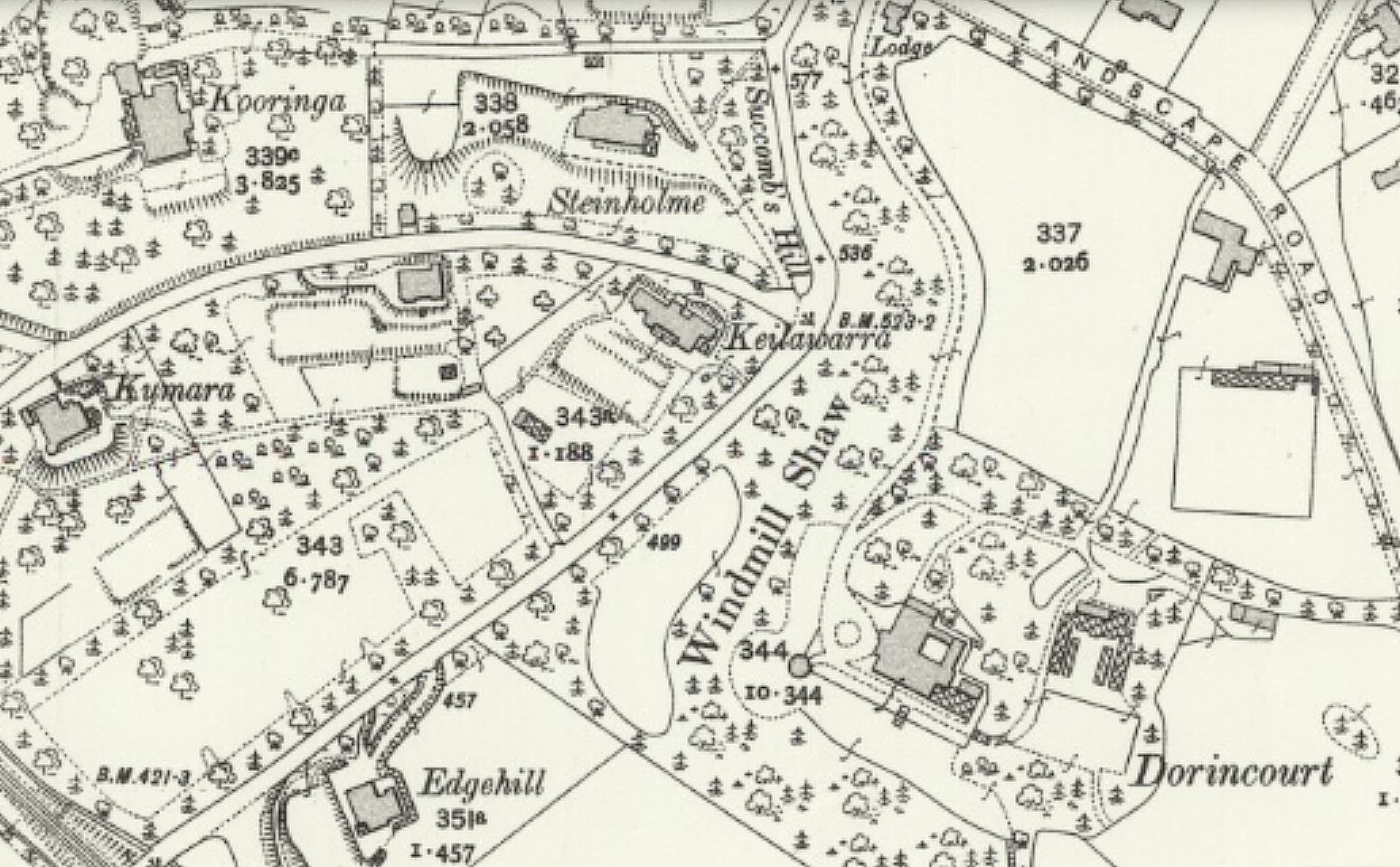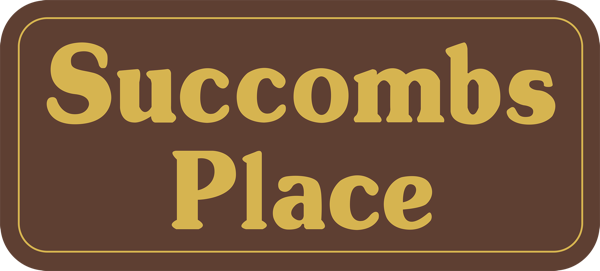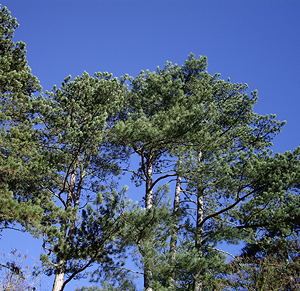The history of the site on which Succomb's Place was built.
For years I wondered what had been on the site before Succombs Place was built. Here is the answer. A house called Keilawarra.

This map was printed in 1912. The same map was reprinted in 1935 and 1947.
Why were three houses with such unusual names, Kooringa, Keilawarra and Kumara built next to each other? There must be some link. The names originate from Australia and New Zealand. Presumably all three houses were built in the late 19th century. More a little later.
Of the three, only the name Kooringa is retained. It's the name given to the road which passes through the land on which the house Kooringa was originally built. Keilawarra still appears on the 1947 edition of the map. Presumably it was the house that was demolished to make way for Succombs Place. Kumara, standing on the junction of Westview and Southview Roads, had been renamed Treelands by 1935. The house called Steinholme was renamed Glenmore by 1935. That house, bearing the same name, was demolished in about 2010. The house Dorincourt was converted into a hotel and then replaced by a block of apartments of the same name built in the 1980s. The house called Edgehill, further down the hill, was demolished in the1990s and replaced by a single house of the same name.
Keilawarra - Keilawarra Ridge, Coffs Harbour, NSW, Australia is a beautifully situated residential road. It appears to be the only current reference to the name.
Historical "When the 784 ton iron steamer [Keilawarra] plunged beneath the seas at night on 8 December 1886 it created history. The shocking loss of life rocked maritime centres around Australia. The scale of the disaster, the needless loss of life and tales of cowardice raised alarm, then anger. How could a respected ship, with a well-known skipper be rammed by another vessel when both in sight? Why did over forty souls perish in such gruesome and tragic circumstances? Why did so few women survive?... The 61 metre ss Keilawarra was a fine steamship powered by a compound marine engine generating 140 horsepower. The vessel was launched in Fife, Scotland in 1878, for the legendary Howard Smith line."
Kooringa - The town of Burra began in 1846 as the company town of Kooringa, surveyed and built for the South Australian Mining Association. It was the first such company town in Australia and remained so until the closure of the mine. An Aboriginal word Kooringa (kuri-ngga) means 'in the locality of the she-oak'.
Kumara - There are two references to this name. The name of the town on the South Island of New Zealand and that of a root vegetable.
The town of Kumara is proud to be the site of one of New Zealand's Last Great Gold Rushes...
Kumara is a root vegetable most commonly grown in the Northern part of the North Island of New Zealand. Said to have been brought to the country in Wakas (Maori Canoes) by the early Maori settlers, it has been cultivated in New Zealand for hundreds of years.

